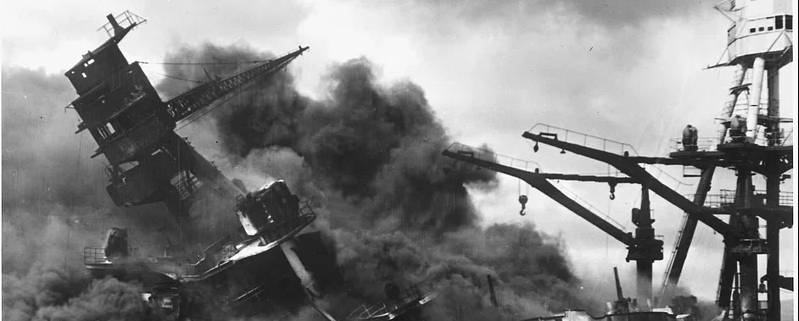December 7, 1941
This week in history, we return to a familiar event. On Dec 7, eighty-two years ago, the Japanese military bombed the US naval bases at Pearl Harbor in Hawaii and several other US-held islands (including the Philippines, Guam, and Wake Island). They also attacked several British holdings in the Pacific at the same time.
The US wasted no time. The next day at noon, President Franklin Roosevelt made his most famous speech–a six-minute address that defined the Pearl Harbor attacks as a “date that will live in infamy.” Interestingly, the original speech blandly described the day as a “date that will live in world history,” not infamy. Roosevelt himself likely made the handwritten change. Thirty-three minutes later, Congress declared war on Japan, spelling the beginning of the end for one of the mightiest empires in Pacific history.
But did you know…?
Some surprising things happened between the 8am attack on Dec 7 and the US’s declaration of war on Dec 8. For instance, Congress’s support of war was not quite unanimous. Pacifist Jeannette Rankin was the only congressperson to vote nay. And technically the British declared war on Japan before the US did! This was in part because of a promise Churchill had made to declare war on Japan “within the hour” of any attack on the US (whom the British were depending on for supplies), and partly because Churchill, unlike Roosevelt, did not have to wait for legislative approval when declaring war.
ECC, of course, has a number of items for those wishing to explore this pivotal moment further. From our Pearl Harbor billfold, to our 10-coin collection, Philippine banknote collections, and General MacArthur memorabilia, there are lots of ways to learn more about and own a piece of the US entry into WWII. (And just a few years later: the Battle of Leyte).



